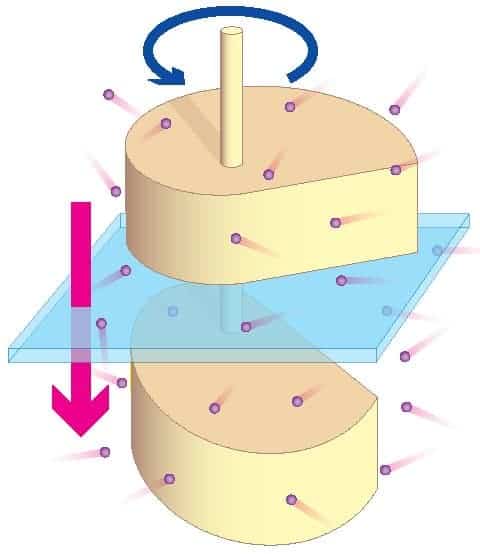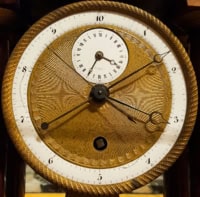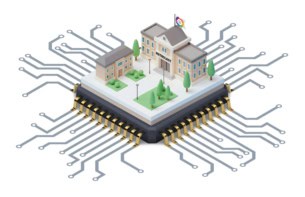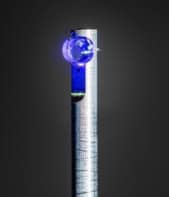
Physicists have unveiled plans for a tiny machine that uses the random thermal motion of molecules in a gas to turn an axle. The device, known as a “Brownian motor”, could also be run backwards to function as a refrigerator. Although the device has not yet been built, thousands of them could be one day be integrated onto a chip to cool computers and other electronic devices.
The random thermal motion of tiny particles in a fluid was first reported by Robert Brown in 1827 and ever since researchers have tried to devise machines that convert this Brownian motion into useful work. However, interest in Brownian motors and refrigerators has intensified in the last 10 years thanks to the growing focus on nanotechnology and bioengineering — two fields in which such devices could be used.
In 2004, for example, Christian Van den Broeck and colleagues in Belgium and the US carried out molecular-dynamics simulations to show that Brownian motion could be used – at least in principle – to drive a tiny rotating machine that is in contact with hot and cold baths. Van den Broeck later showed that Brownian motion could also be used to create tiny refrigerators that could transfer heat from a cold region to a warm region using a specially shaped paddle that is moved along a track.
Snail-shaped rotors
Now, however, Van den Broeck and Martijn van den Broek of Hasselt University in Belgium have devised a rotary machine that can operate either as a Brownian motor or as a refrigerator (arXiv:0711.1758v1). Their device consists of two snail-shaped spiral rotors that are attached to an axle and separated by a thin membrane (see figure). One rotor sits in a warm dilute gas, while the other is in a cooler gas.
When operating as a motor, molecules in the warm gas collide with the rotor, giving it some of their kinetic energy. Some of this energy is transferred via the axle to the other rotor, which then imparts some of its kinetic energy to molecules in the cold gas. Because the spirals on the two rotors point in opposite directions, this exchange of energy can exert a tiny torque on the device, causing it to rotate. Calculations suggest that the motor could rotate at up to a thousand times a second, depending upon the temperature gradient across the membrane.
However, if an external power source is used to run the device backwards, it can then operate as a heat pump, with kinetic energy from the cold gas transferred to the warm gas via the rotors. This, according to Van den Broeck, is a significant improvement over his previous refrigerator, because the rotary design would allow the refrigerator to be fixed in one place and operated continuously.
In their numerical simulations, the pair investigated a number of different shapes and sizes of rotors that were between 4-10 nm thick and about 5-12 nm across. Van den Broeck told physicsworld.com that the biggest challenge in designing the motor was getting the shape right, which was done using computer simulations.
Design trade-off
Their spiral-rotor design is a trade-off between the need for the rotors to have asymmetric “chiral” shapes, which tend to boost their ability to harness Brownian motion, and the need to minimize the friction encountered by the rotating device, which would reduce its efficiency both as a motor and refrigerator.
According to Van den Broeck, carbon nanotubes could be used to make the machines, and thousands of tiny rotors could be integrated onto a chip that could be used to cool computer chips or other electronic devices. He also believes that the rotors could be very useful in creating bio-engineered systems in which the careful control of temperature would be needed to ensure that certain biochemical reactions occur at the desired rates.



